Go to All Blogs | Recommended Bird Field Guides Blogs | Neotropical Birding Tours | All our Birding Tours
This blog was updated on 19 March 2024
Central America:
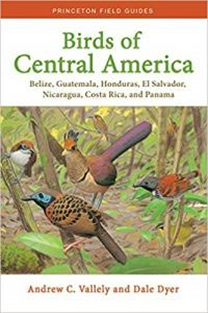
Birds of Central America: Belize, Guatemala, Honduras, El Salvador, Nicaragua, Costa Rica, and Panama (Vallely and Dyer, 2018). Perhaps the finest and most comprehensive field guide to cover all of Central America which largely replaces the old (1995) classic (see below). This book also covers a wider area – the whole of Central America, except for Mexico (unfortunately). We definitely recommend the soft cover version, as it is more practical, not to mention really well-priced for a work of this magnitude. We’re pleased to say this book is in a proper modern style, with range maps, plates, and text all together. The book is not perfect, but the problems are very minor in comparison to the advantages. An example of an imperfection, though, is that the paintings are a bit washed out (which severely underplays this region, as many of the birds are far more spectacular-looking and brightly colored in real life). The index is not perfect either (e.g. ‘Collared-Dove, Eurasian’ instead of ‘Dove, Eurasian Collared-’). We recommend this book, not only for species identification, but also as a great source of information on bird distribution and taxonomy for your next Central American birding trip.
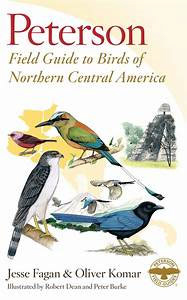
Birds of Northern Central America (Fagan and Komar, 2016). This high-quality guide covers Belize, El Salvador, Guatemala and Honduras. The size and weight make it perfect to be carried in your vest pocket while out birding. The illustrations (Robert Dean and Peter Burke) are very good and it also includes distribution maps and useful information about different ecosystems, natural areas, etc. This guide is perhaps one of the best recent neotropical field guides to be published and one of the easest to carry. We strongly recommend this book if you need a reliable source of information for birding in northern Central America, including Belize and Tikal.
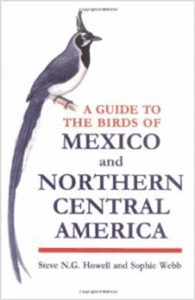
A Guide to the Birds of Mexico and Northern Central America (Howell and Webb), 1995. This slightly outdated guide covers the northern Central American region of Mexico, Guatemala, Honduras, Belize, and El Salvador. This book is a classic and has such informative and detailed text that we’ve left it in here, despite the fact that the above two guides now largely replace it (except for Mexico). For a birding trip to Mexico this guide could be supplemented with the Merlin identification app or van Perlo’s portable yet comprehensive illustrated checklist to the Birds of Mexico and Central America (Princeton Illustrated Checklists).
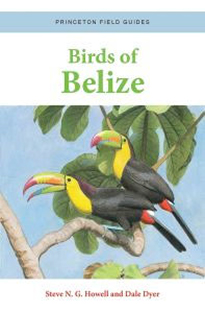
Birds of Belize (Howell and Dyer, 2023). If you are planning to visit Belize, this pocket-sized and quite good field guide is worth taking. See our full review of this book here.
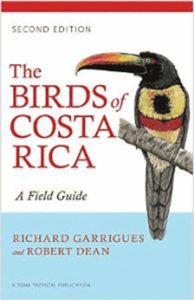
The Birds of Costa Rica Second Edition (Garrigues and Dean, 2014). This is the most recent guide to Costa Rica, and it is good. There are quality illustrations and range maps. Although there are a few omissions, this is overall the best field guide for your next Costa Rica birding tour. Furthermore, the size and weight make it easy to carry in the field.
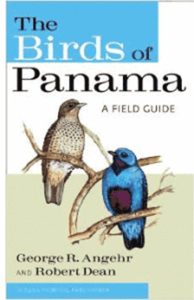
The Birds of Panama (Angehr and Dean, 2011). Many of the same illustrations are used as in the book above, with a similar range map style and text. We definitely recommend this as the best book for Panama.
The Caribbean:
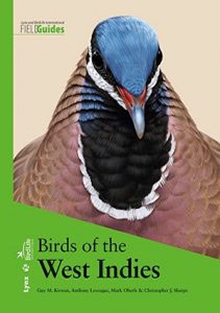
Birds of the West Indies (Kirwan, Levesque, Oberle and Sharpe, 2019). This field guide is in our opinion the most comprehensive field guide to West Indian birdlife to date. It covers the Bahamas, Cuba, Haiti, the Dominican Republic, Jamaica, Puerto Rico, and the Lesser Antilles. The illustrations are excellent and, despite coming from a number of artists, they fit together seamlessly. Unusually the range maps are included on the plates, but this works well. There is a QR code for each species that links to the Internet Bird Collection database, allowing you to access a greater array of photographs, videos, and sounds. All in all, we are very impressed with this guide and would recommend it as the go-to guide when visiting any of the West Indies. We recommend this guide for a Cuba birding trip, even though there is a ‘Birds of Cuba’ which we cover below.
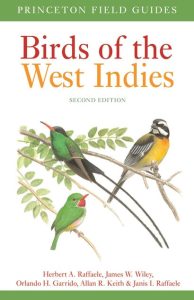
Birds of the West Indies (Raffaele et al., 2020). The second edition of this finely-illustrated field guide to the entire Caribbean is excellent and covers all the species within the region. This field guide covers Cuba, Haiti, the Dominican Republic, Jamaica, the Bahamas, Puerto Rico, and all the islands of the Lesser Antilles. Not all species are provided with range maps, though (when they are endemic to one particular island), but as a whole this is a very useful guide with detailed descriptions. This excellent guide is also lightweight, making it easy to carry in the field.
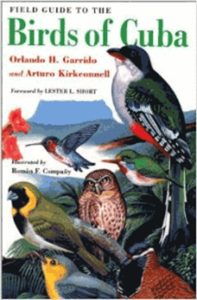
Field Guide to the Birds of Cuba (Garrido and Kirkconnell, 2000). This is the only field guide exclusively covering this endemic-laden island. It is a medium-quality field guide but very useful if visiting Cuba (although we feel the above ‘Birds of the West Indies’ (Kirwan et al.) is a better option as a field guide for Cuba and has superior illustrations).
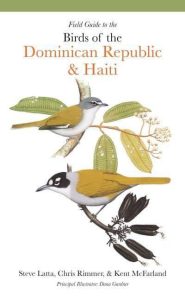
Birds of the Dominican Republic and Haiti (Latta et al., 2022). This is an excellent guide, covering all the species of the island of Hispaniola (represented by the two countries, Dominican Republic and Haiti). All the plates are together, with following species accounts, which include range maps. See our full review of this book here.
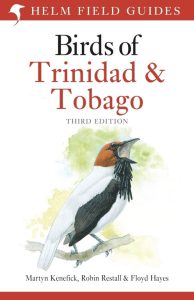
Field Guide to the Birds of Trinidad & Tobago (Kenefick, Restall and Hayes, 2019).This is the best field guide to these islands, covering all birds occurring there. It contains clear, concise descriptions and particularly helpful ‘similar species’ information and plumage variations, but no range maps.
South America:
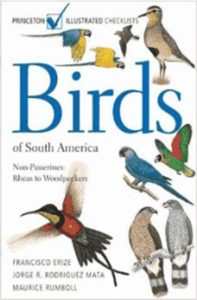
Birds of South America: Non-Passerines (Erize, Mata and Rumboll, 2006). This guide covers the entire continent’s non-passerine birds. It is essentially an illustrated checklist, but the artwork is very good. Each species is described with several plumages, some vocal notes, and a range map. Though not very detailed, it does cover nearly 1,300 bird species, and together with the Ridgely and Tudor Songbirds of South America (see below) you have coverage of over 3,000 bird species! Thus, together with the volume below you’ll be able to cover all the bird species of South America, especially where other guides either fail to include the entire range or not do so very well.
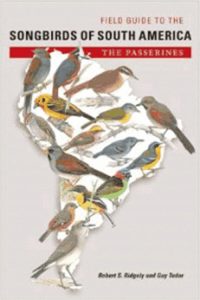
Field Guide to the Songbirds of South America: The Passerines (Ridgely and Tudor, 2009). This book covers over 2,000 passerine birds in South America, with over 1,500 excellent illustrations by Guy Tudor. The volume contains updated range maps and illustrations. Paired with the above guide you have coverage of all the species in South America in two large guides. However, since there are more than 3,000 species on this spectacularly bird-rich continent, we certainly recommend one of the country- or region-specific books below, in order to be less overwhelmed!
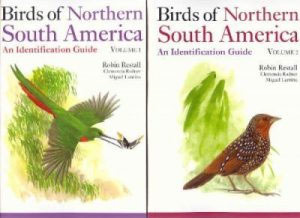
Birds of Northern South America (Restall, Rodner and Lentino, 2007). This two-volume set covers Colombia, Ecuador, Northern Peru, Northern Brazil, Venezuela, Guyana, and French Guyana. A huge 2,308 species are covered in this guide, which describes over 20% of the world’s species! The first volume is a great source of information while the second volume is the illustrated field guide. Very good illustrations (which include different races and age plumages) and the accompanying text cover many subspecies as well as differing plumages. The “problem” with birding trips to South America is that one does get overwhelmed by the sheer number of bird species! This is currently the book to get for birding in Guyana.
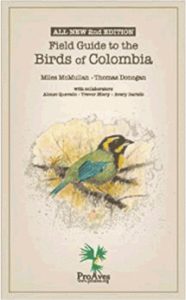
Field Guide to the Birds of Colombia (McMullen and Donegan, 2014). This, the new Colombia field guide, has many positives, including updated text, up-to-date distribution maps, text alongside illustrations, conservation and endemism status and a more compact size. Some of the illustrations are not the best but together with Birds of Colombia (see below), this is the easiest book to carry in the field. Note: As a bonus this field guide contains a couple of plates with the most characteristic mammals of Colombia.
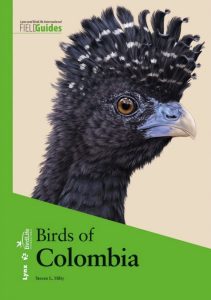
Birds of Colombia (Hilty, 2021). This super book is the updated version of the original and classic ‘Field Guide of the Birds of Colombia’ by Steve Hilty and even though updated versions of the original Guy Tudor artwork have not been used, the color plates are great and include all species and subspecies. Furthermore, this book has been completely updated taxonomically. The text is concise yet informative while the maps are small but show the main geographic features. It might not be the easiest to carry in the field, and it is a bit pricey, but overall, it is certainly worth it. It is a great source of information for preparing for a Colombia birding tour.
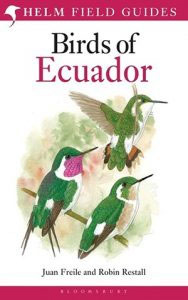
Birds of Ecuador (Freile and Restall, 2018). This recently released field guide is a great companion to a birding trip to this small but incredibly species-rich country. It draws on the latest taxonomical research, thus improving on its slightly outdated predecessor. The guide is bulky; however, when covering Ecuador in one volume it is difficult to condense things! The plates are arranged opposite to the distribution maps alongside the text, allowing for ease of use. The illustrations are detailed; however, some are not entirely lifelike.
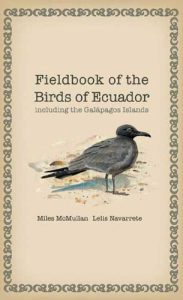
Fieldbook of the Birds of Ecuador including the Galápagos Islands. Second Edition (McMullan and Navarrete), 2017. This is a great improvement from the first edition. The book follows the same format as the above ‘Birds of Colombia’ (McMullan and Donegan). It is easy to carry in the field, provides concise and updated taxonomic information, and shows distribution maps of all species found in Ecuador and the Galápagos. The plates are good, however, not brilliant, but they do include field marks to aid identification. All in all, the clarity of the images, together with the species descriptions, aids species identification in the field and makes it a great travel companion for an Ecuador birding tour or a Galápagos cruise.
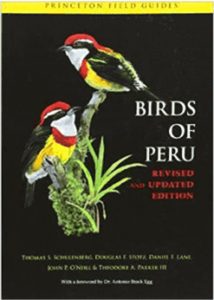
Birds of Peru, revised and updated edition (Schulenberg et al., 2010). This is the most complete and up-to-date guide to the birds of Peru. Considering it covers over 1,800 species, this book is still easily portable. The artwork isn’t too crammed and is very good, but not particularly crisp. The range maps are of a reasonable size and show each region of Peru, and the text is concise but not very detailed, given the small amount of space available. Any larger, though, and this volume would require a Sherpa because of the sheer volume of information that could be included, so it presents an admirable effort to keep it compact while still comprehensively covering the country.
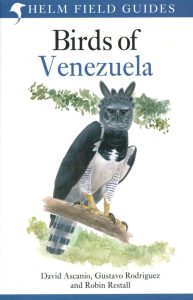
Birds of Venezuela (Ascanio, Rodriguez and Restall, 2021). This most-complete and authoritative work has excellent plates, updated taxonomic information, and good range maps. It is also a good choice as a field guide for Guyana, which does not have its own guide (although the Birds of Northern South America, shown above, also works well).
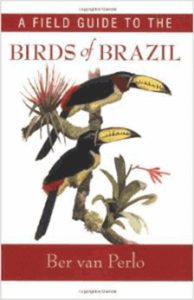
A Field Guide to the Birds of Brazil (van Perlo, 2009). This is the most up-to-date and complete guide to the birds of Brazil. It’s a medium-caliber guide; Brazil, strangely, has never had an absolutely top-class guide, but this one suffices, although the illustrations are not the best. Until this book was published, the bird field guide situation in Brazil was really bad. We recommend this only if you are visiting the Brazilian Amazon and the northeast of the country.
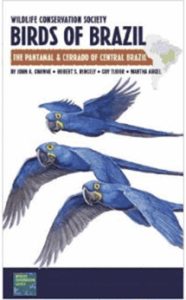
Birds of Brazil – The Pantanal & Cerrado of Central Brazil (Gwynne, Ridgely and Tudor, 2010). This must be the best guide if you’re doing a birding trip to the Pantanal or the Cerrado, in either Canastra National Park or Chapada de Guimares. This guide offers excellent plates and distribution maps and is a great source of information. Thankfully, it is relatively lightweight and thus easy to carry in the field.
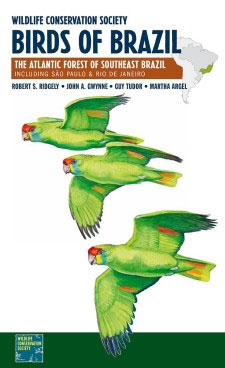
Birds of Brazil: The Atlantic Forest of Southeast Brazil (Gwynne, Ridgely and Tudor, 2016). This field guide can be considered as the second volume of the previous publication above and follows the same format with great quality illustrations, maps and information for all the species occurring in the Atlantic Forest region of Brazil. This guide, together with the ‘Birds of Argentina’ (below) can be used to travel to Paraguay which is still lacking a good field guide to the country. We highly recommended this book.
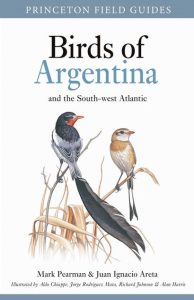
Birds of Argentina and the South-west Atlantic (Pearman and Areta, 2021). It is great to now have a modern-style, very good, field guide for Argentina. Conveniently, this book also covers the Falkland Islands/Malvinas. The illustrations are good and are on the same page as the text and maps, which are also good. This book also has some extremely useful pieces on tricky species identification (prions and pipits), sonograms of some species where the calls/songs are key (e.g. pipits, crakes, etc.), an illustrated list of plants of the region, and a great article on the major habitats such as inter-Andean valleys, Yungas, Chaco, etc.
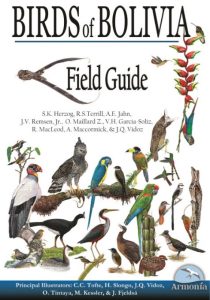
Birds of Bolivia Field Guide (Herzog et al., 2016). This is the only field guide available for Bolivia and nicely covers all species and subspecies (with up-to-date taxonomy) found in landlocked Bolivia. The plates are good, however not brilliant, and it provides concise information and range maps. This book, as well as ‘Birds of Peru’ (see above) are among the heavier modern field guides. Please note that all proceeds from the sale of this book go directly to bird conservation and raising environmental awareness in Bolivia.
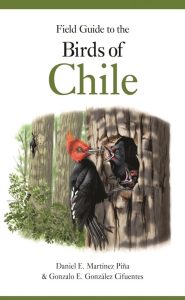
Field Guide to the Birds of Chile (Piña and Cifuentes, 2021). This is the go-to guide for anyone visiting Chile. The illustrations are good quality, alongside the text and distribution maps. The maps for most terrestrial species include a lot of southern Argentina as well, while those for the pelagic species are more zoomed-out. The introduction is very informative and gives a great breakdown of Chile’s topography and habitats.
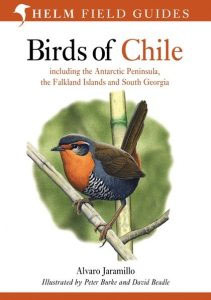
Birds of Chile (Jaramillo, Burke and Beadle, 2003). This is a great guide for the birds of Chile and also covers the Antarctic Peninsula, the Falkland Islands/Malvinas, Juan Fernandez Archipelago and South Georgia. However, we would suggest the Couve and Vidal guide below if visiting the Falklands/Malvinas or South Georgia. The illustrations are good with the text and distribution maps opposite; making it a nice, easy guide to use, and its relatively light weight will ensure that you can travel with it easily.
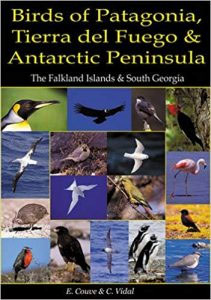
Birds of Patagonia, Tierra del Fuego & Antarctic Peninsula (Couve and Vidal, 2003). A useful photographic guide to take with you on a trip to the most southerly parts of continental South America or on an Antarctic birding cruise. The photographs are good, with many used for each species, although some of the pelagic species’ photographs could be improved! The species accounts are detailed, and the maps are well done.
